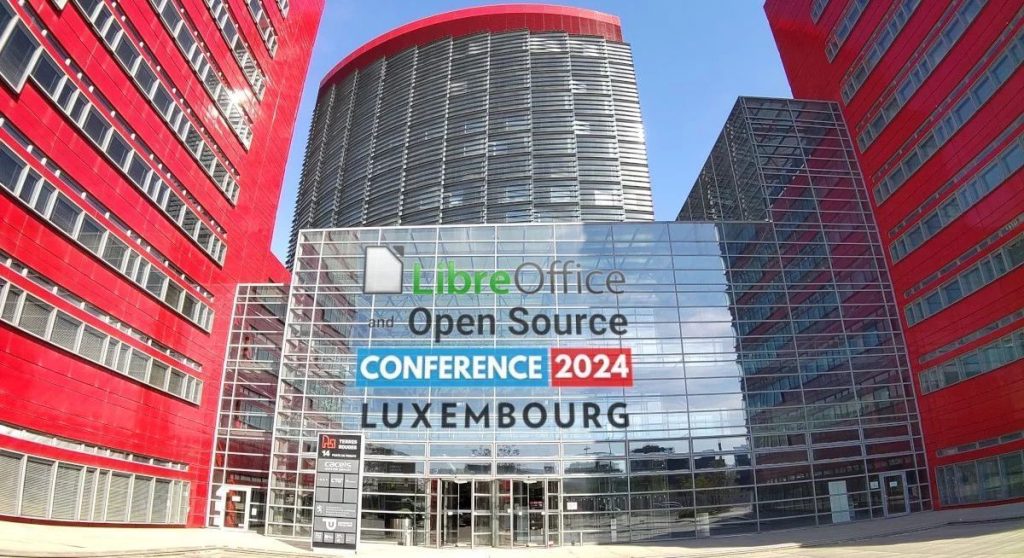
The LibreOffice Conference 2024 took place from 9th – 12th October in Luxembourg. Collabora was one of the key sponsors of this event and contributed a significant number of talks on different topics relating to LibreOffice technology. You will find a list of these contributions, including the video recordings and available slides, inside this blog.
Would you like to contribute to LibreOffice technology yourself? A vivid community has evolved around Collabora Online and CODE. Collabora also hosts the COOL Days, a conference focused on all developments regarding Collabora Online. Join us!






Building a successful Open Source business around LibreOffice, Michael Meeks
Hear about some of the challenges and successes of building an open-source business around LibreOffice from Collabora Productivity’s perspective. Engage with some of the various types of open source business strategies that I’ve work with through my career. Hear about some of the approaches that I’ve seen in action and their strengths & weaknesses.
Hear a little about the state of open source business around LibreOffice and some ideas about how the ecosystem of companies that contribute significant work back to the project can be strengthened and grown.
Meet the Engineering Steering Committee (ESC), Miklos Vajna
ESC call, a conference edition!
Unleash the power of Collabora Online – Keynote, Michael Meeks
Hear about how Collabora Online, built on LibreOffice technology, provides a great foundation for Open Source productivity. Find out what improvements we’ve made over the past year and how our features create a secure document editing experience for users.
Spreadsheet Parallel Optimizations, Caolán McNamara
Threading improvements in Calc. Removing threading choke points from calc’s parallel calculations. SvNumberFormatter, intrusive_ptr gotcha, FormulaToken reference counting.
Conditional Formatting dialog cleanup, Pranam Lashkari
How to save users from overwhelming dialogs with a lot of details, but convey the same information more simply. In this case, it is about conditional formatting dialog.
Implementing STYLEREF: a journey in compatibility, Skyler Grey
STYLEREF, a field that references content by its style, has been in the power-user toolkit of other office suites since before I was born. LibreOffice, however, has always missed out. Documents with STYLEREF already didn’t update it. Adding new STYLEREF fields was impossible.
Around a year ago, I implemented the STYLEREF field, bringing better compatibility with documents created elsewhere and, of course, the use cases it enables. In this talk, I’ll go over STYLEREF fields, where you might use them, and a quick run-down of how I implemented them.
Improved Fontwork Text Placement, Attila Szűcs
LibreOffice was able to display curve-based multi-line fontwork text, but the text placement was good only on the baseline. It has now been improved by calculating separate curves for separate lines, and some issues have been fixed.
Come and see how this is implemented, what math is behind the curve calculation and the text placement, what the challenges were, what still needs to be solved and how MS Word handles them compared to Libreoffice.
Bug for Bug: layoutInCell interoperability, Justin Luth
Long ago, OpenOffice implemented an image-layout option to “Follow Text Flow” in order to allow interoperable with Microsoft’s “Layout in Table Cell”. Many interoperability import improvements have been made for 25.2.
Continuous endnotes in Writer, Miklos Vajna
LibreOffice was always capable of hosting endnotes on one or more separate Writer pages at the end of the document, as opposed to footnotes, which appear on the same page as the anchor itself. Word has a third mode: continuous endnotes appear directly at the end of the body text, inline. This case was not supported for Writer for a long time, then a first version was added in 2019. While this version did work for simple cases, it had trouble with scaling to multi-page endnotes. This year’s section version is based on sections, which scales much better. Come and see how this work is implemented, where are the still rough edges and how you can help.
PDF Annotations in LibreOffice Draw, Tomaž Vajngerl
In this presentation Tomaž talks about how the annotations in LibreOffice Draw have been extended to support PDF annotations.
In LibreOffice Draw we can import a PDF with PDFium, where each PDF page is imported as an image and added into each Draw page. The PDF annotations are then added separately as comments, so they can be added and modified separately to the PDF. To support PDF annotations in LibreOffice Draw, it is necessary to change how the annotations are stored in the document model, which is now very similar to the objects in the document. The user should be able to move, resize the annotations and change properties.
This blog currently includes only the first two batches of talks and slides from the LibreOffice conference 2024. We’ll keep on updating this page steadily as new videos become available at LibreOffice’s YouTube channel. Please check back for more.




